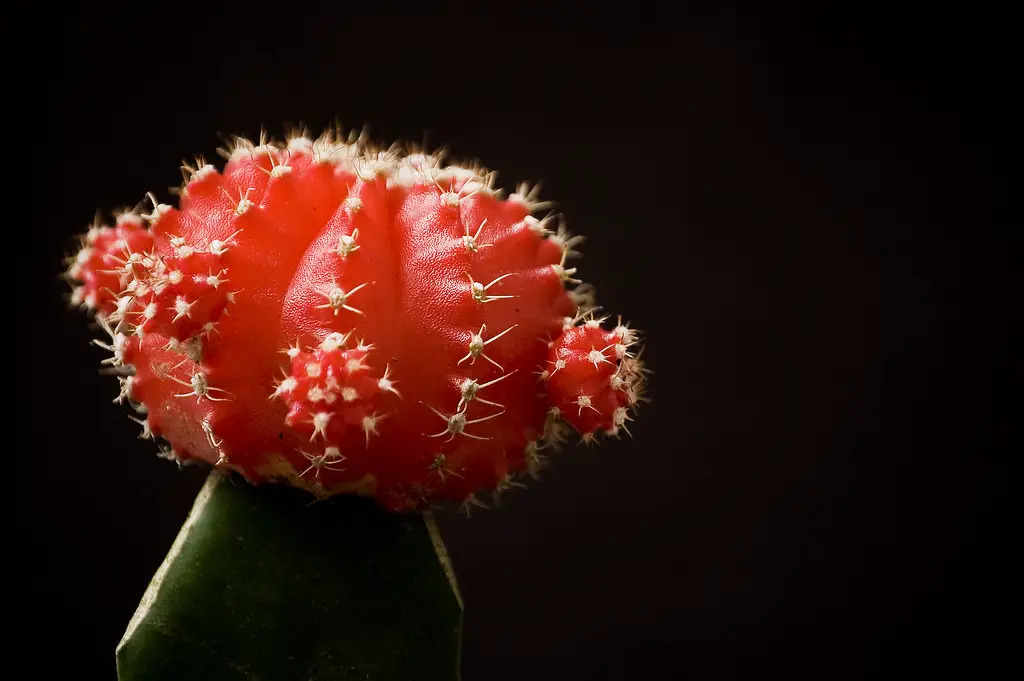The Moon Cactus is an alluring and unusual plant that captivates gardeners and houseplant enthusiasts alike. Its scientific name is Gymnocalycium mihanovichii, but it’s colloquially known as the Moon Cactus due to the bright colors and round shape of its top. What sets the Moon Cactus apart is that it’s actually two cacti grafted together. The colorful top part lacks chlorophyll and can’t photosynthesize, so it relies on the green base for nutrients.
This plant’s striking appearance makes it a favorite among cacti enthusiasts, but its care requires some understanding of its unique needs. While it’s not a difficult plant to grow, paying attention to its light, water, and soil requirements is essential for it to thrive.
Native to Paraguay and Argentina, the Moon Cactus’s vibrant colors can range from pink and red to yellow and orange. The intriguing combination of two different cacti makes this plant a fascinating addition to a cacti collection or a conversation starter as a stand-alone piece.
| Attribute | Details |
|---|---|
| Common Names | Moon Cactus |
| Botanical Name | Gymnocalycium mihanovichii |
| Family | Cactaceae |
| Plant Type | Grafted cactus |
| Mature Size | Up to 8 inches |
| Sun Exposure | Bright, indirect light |
| Soil Type | Well-draining cactus mix |
| Hardiness Zones | 10-11 |
| Native Area | Paraguay, Argentina |
Moon Cactus Care
Moon Cactus care requires attention to several aspects to ensure that both parts of the grafted cacti thrive. While the colorful top part, which lacks chlorophyll, requires protection from direct sunlight, the green base needs sunlight to photosynthesize.
Watering should be moderate, with the soil allowed to dry completely between waterings. Since the Moon Cactus is prone to root rot, the right soil mix and proper drainage are crucial to its survival.
Light Requirement for Moon Cactus
Moon Cactus prefers bright but indirect sunlight. Direct sunlight can cause the colorful top part to fade and can lead to scorching. A spot near a window with filtered light or using a shade cloth can provide optimal lighting conditions.
Soil Requirements for Moon Cactus
A well-draining soil mix specifically formulated for cacti is essential. Adding sand or perlite to regular potting soil can improve drainage. Make sure the pot has drainage holes to prevent standing water.
Water Requirements for Moon Cactus
Watering should be done sparingly, allowing the soil to dry completely between waterings. Reduce watering in winter, and always check the soil’s moisture before watering to avoid over-saturating.
Temperature and Humidity
Moon Cactus thrives in temperatures between 65-80°F (18-27°C) and can tolerate dry indoor air. Avoid temperatures below 50°F (10°C) as they can damage the plant.
Fertilizer
A diluted, balanced cactus fertilizer applied during the growing season will support the plant’s growth. Follow the instructions on the packaging for proper application.
Pruning Moon Cactus
Pruning is generally unnecessary but can be done to remove dead or diseased parts. Sterilize cutting tools before and after use to prevent disease spread.
Propagating Moon Cactus
Propagation is typically done through grafting. Cut the top part and graft it onto a compatible green cactus base. Allow the cut surfaces to callous before grafting.
How To Grow Moon Cactus From Seed
Growing Moon Cactus from seed is challenging due to the grafting process. However, seeds can be sown in a cactus mix, kept warm, and gradually introduced to sunlight as they grow.
Common Pests & Plant Diseases
Aphids
Treat with insecticidal soap or neem oil.
Root Rot
Caused by overwatering; ensure proper drainage and water sparingly.
Common Problems With Moon Cactus
Discoloration
May be due to direct sunlight; move the plant to a location with filtered light.
Graft Failure
A weak connection between the top and base; consider re-grafting or consult a specialist.
Pro Tips
- Choose a pot with good drainage to prevent root rot.
- Protect the colorful top part from direct sunlight to maintain its vibrant color.
- Monitor for pests and treat promptly to prevent infestation.
- Provide support if the top part becomes too heavy for the base.
- Be patient with grafting; it may take practice to perfect the process.




